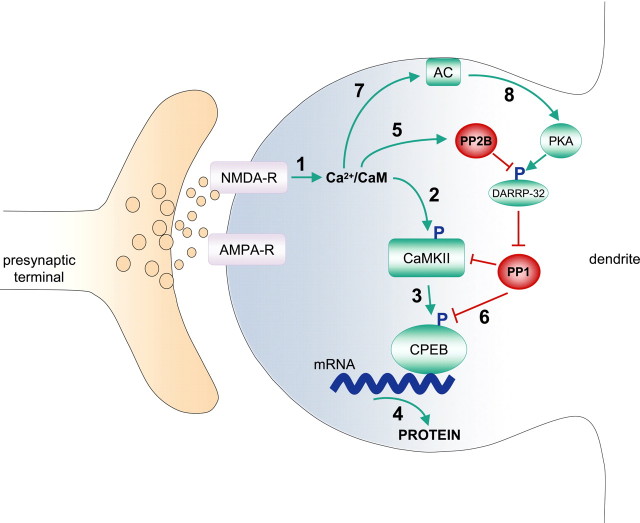Figure 5.
Model for bidirectional regulation by CaMKII and PP1 of CPEB-mediated protein synthesis. Modest LTP induction (1 × 100 Hz) stimulates Ca2+ influx through the NMDA-R (1). Ca2+ binds calmodulin (CaM) to activate CaMKII (2) through autophosphorylation. Activated CaMKII phosphorylates CPEB (3) to stimulate protein synthesis (4). The elevated Ca2+ also activates PP2B (5), which dephosphorylates DARPP-32, thereby activating PP1 to dephosphorylate CPEB (6) and limiting protein synthesis. However, robust LTP (4 × 100 Hz) further elevates Ca2+, stimulating adenylyl cyclase (AC) (7) to generate cAMP. This activates PKA (8), which phosphorylates DARPP-32, thereby inhibiting PP1 to prolong CPEB phosphorylation and protein synthesis. Green represents events that enhance protein synthesis, and red denotes inhibitory events.

